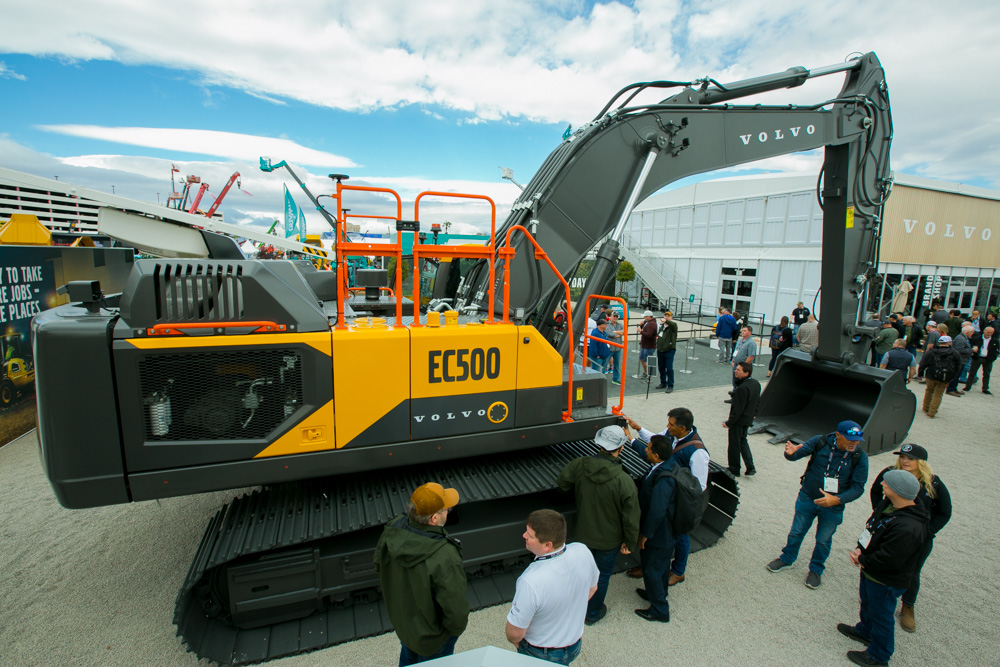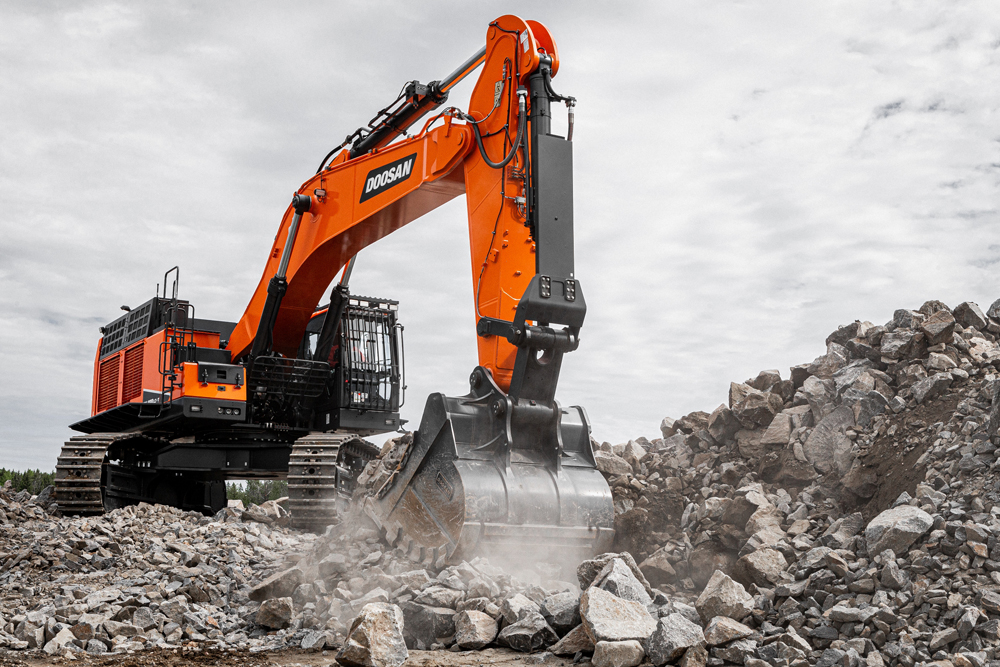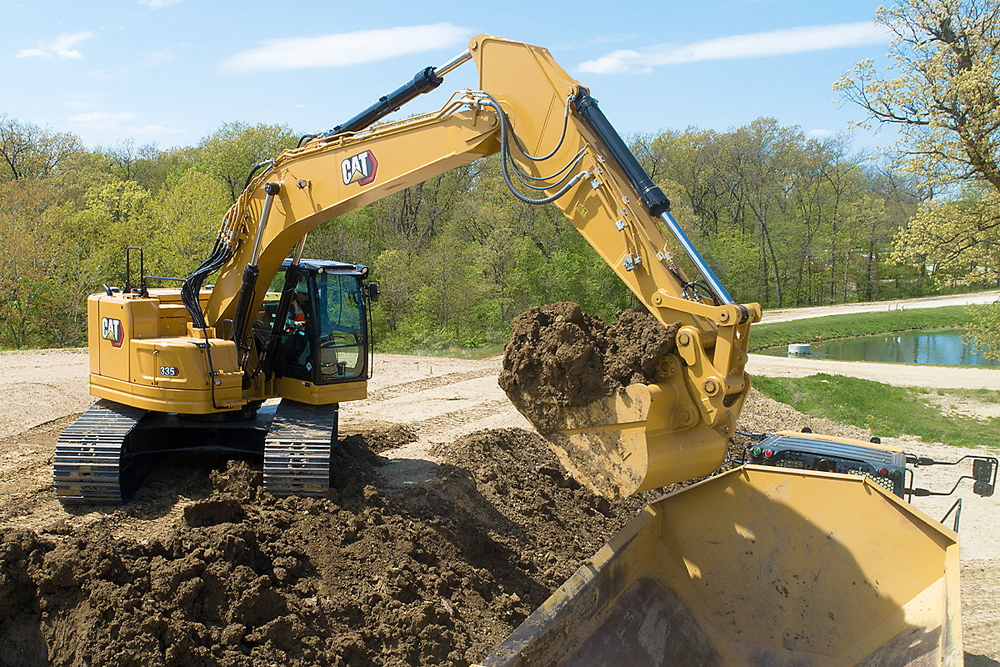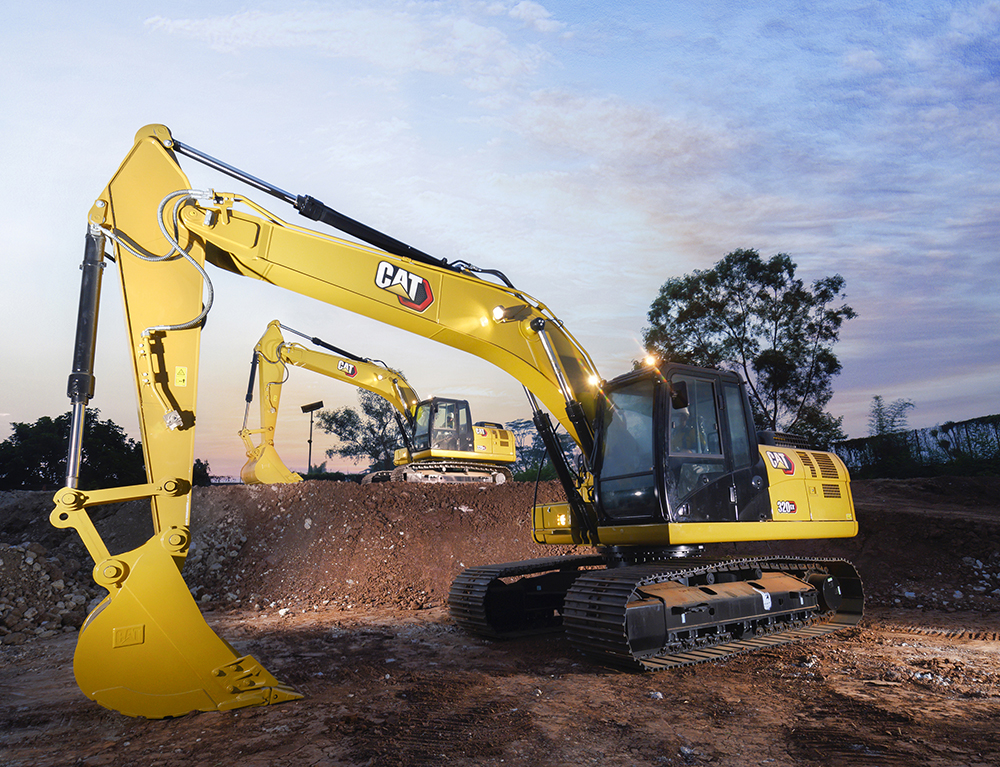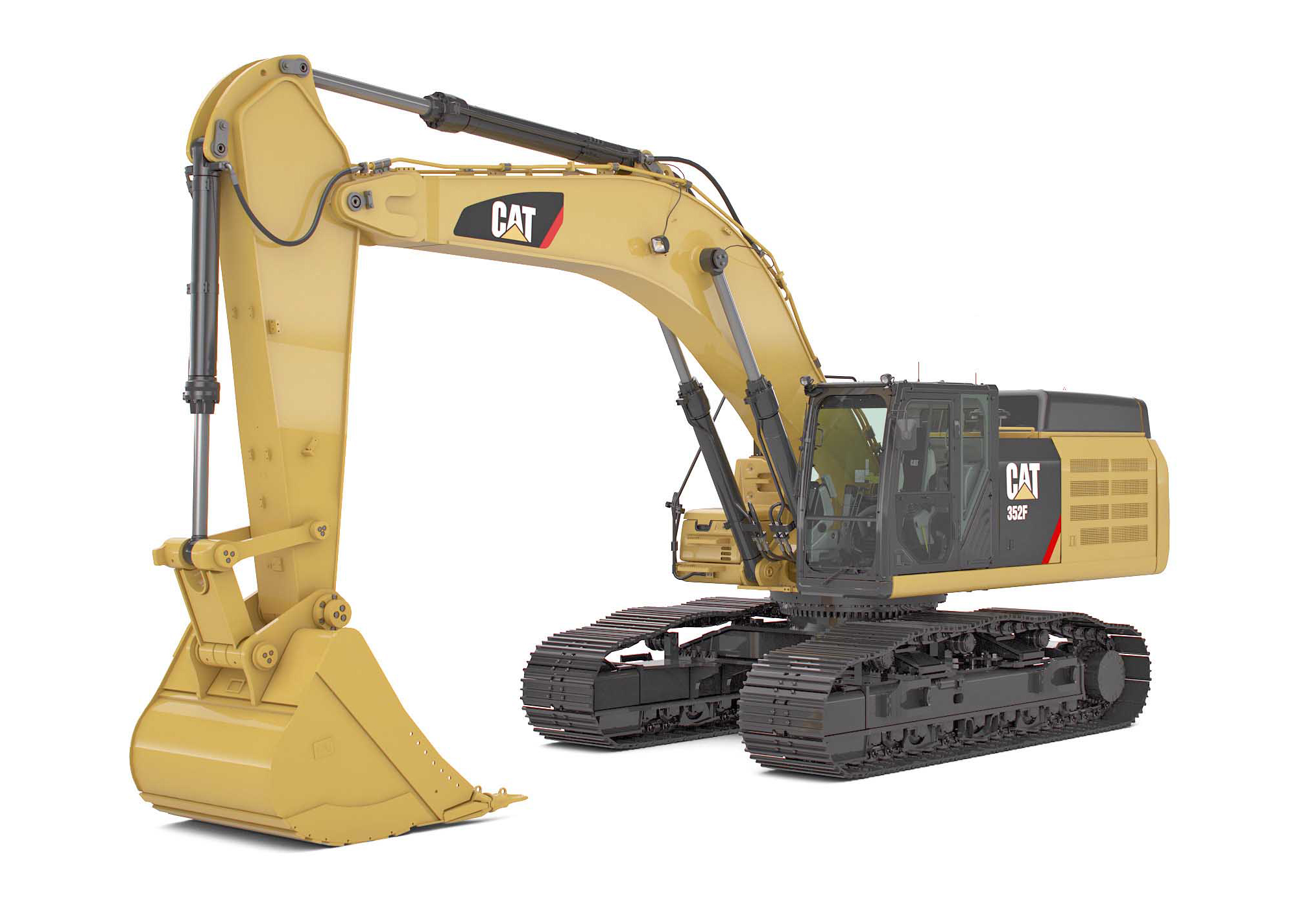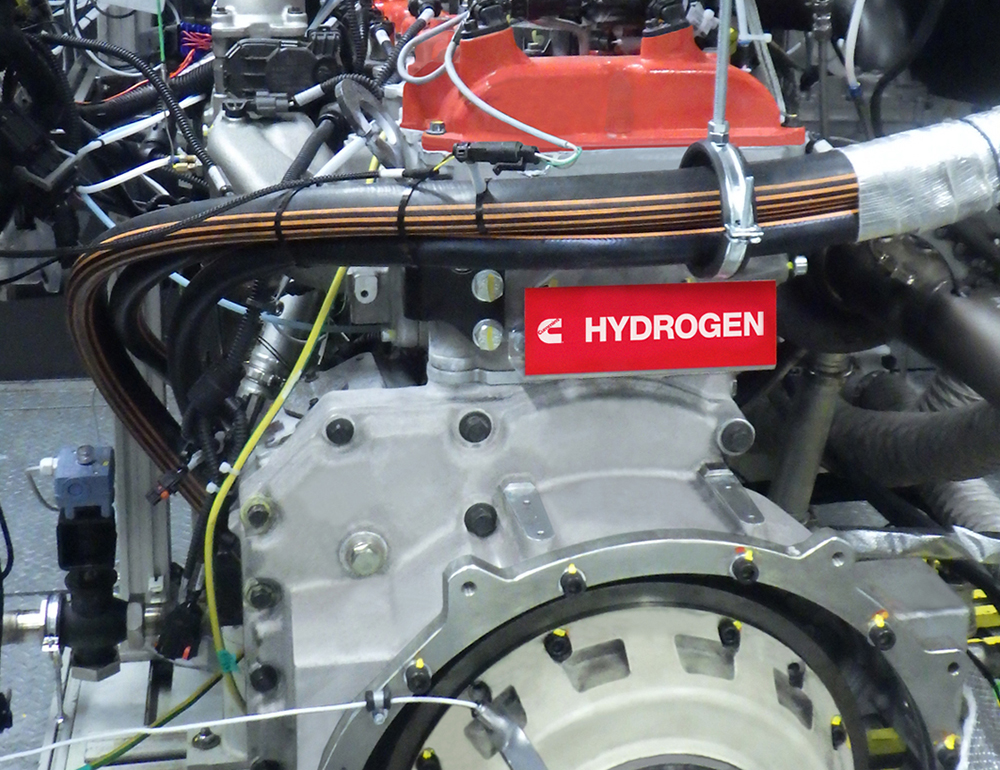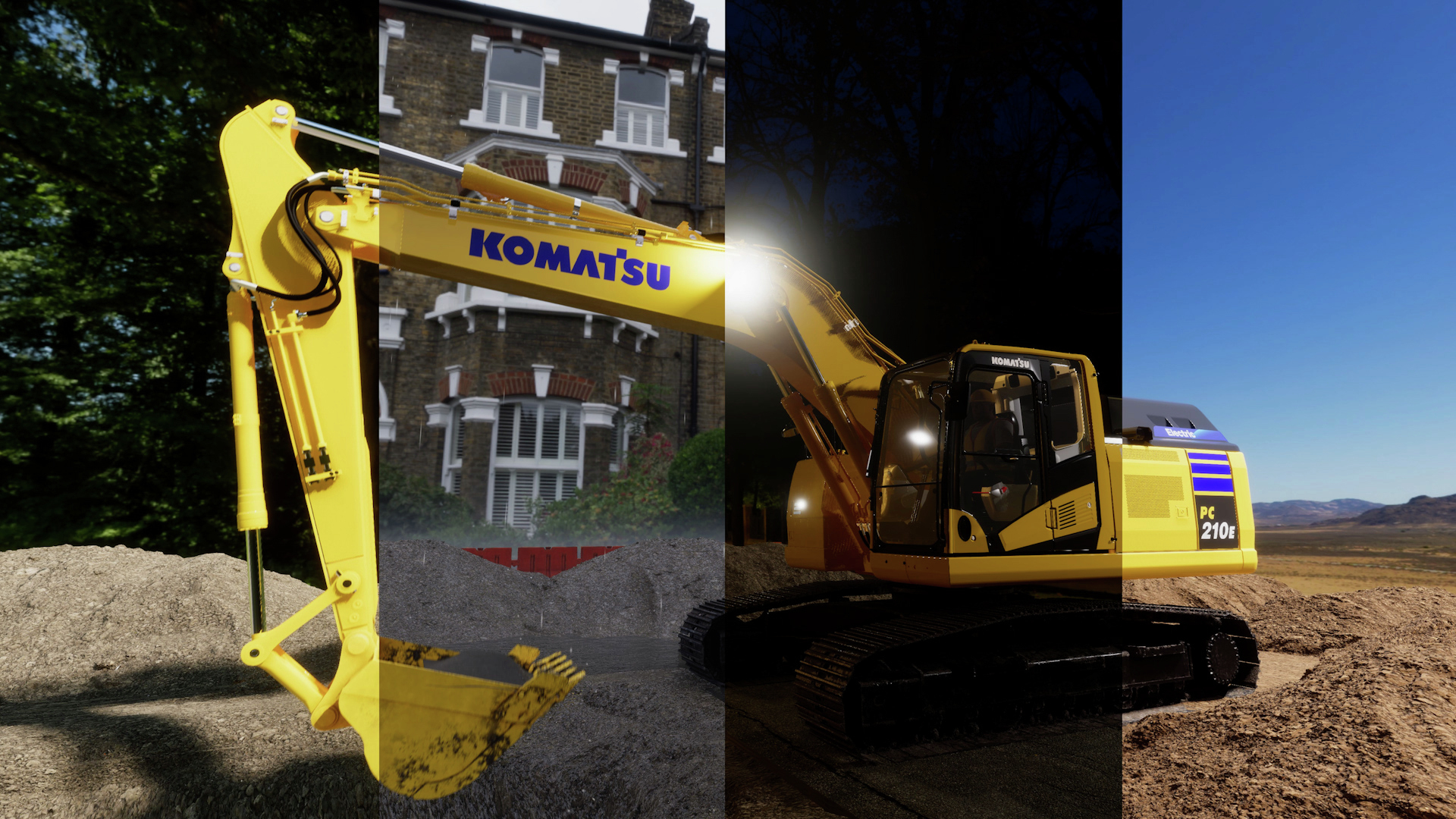
Thankfully, as batteries get more powerful and last longer - and the hydrogen sector gets increasingly serious about supply and distribution - excavator manufacturers are finding a growing market for alternatively fueled big machines.
Komatsu and Link Belt are two manufacturers that have taken on board their clients’ needs for more sustainable earthmoving on a big scale.
Komatsu is now making available its innovative PC210E crawler excavator, developed in partnership with Proterra over a number of years. Proterra is already a major player in the design and manufacture of zero-emission electric transit vehicles and EV technology solutions for commercial applications, especially buses. Since 2004, Proterra – based in the US in Silicon Valley, near Los Angeles and in the state of South Carolina - says its technology has been proven through more than 65 million service kilometres in heavy-duty applications.
Komatsu’s PC210E integrates Proterra’s proven lithium-ion battery technology with Komatsu’s components such as the hydraulic pump, controller and electric motor. The machine benefits from robust protection for the battery pack to ensure that this will cope with the tough construction application.
Digging performance and machine durability is said to match the conventional diesel-driven PC210 model. The Proterra battery system is said to allow operation for up eight hours when fully charged. Electric power means that the machine can be used in enclosed areas such as underground operations, as well as urban areas and night-time construction work where noise abatement is key – even written into a contract.
This latter point is particularly important for urban-focussed contractors. While smaller electric machines are more common, their capacity to move earth is also smaller than the larger machines. A contractor under tight scheduling for night-time work would have to operate more of the smaller machines than if the company could operate one, more efficient electric machine.
Also, not to be underestimated when considering a larger electric machine, is that zero-engine vibration compared to diesel units helps reduce operator fatigue.
Link-Belt Excavators, based in the US state of Kentucky, is pushing hard towards sustainable and autonomous machine operation. “With sustainability, we have targeted emissions reductions of 30% by 2030 when compared to 2010,” said Adam Woods, general manager of innovation and product portfolio strategy. The reduction is just one step in Link-Belt’s commitment to using carbon neutral machines by 2050. “We are preparing for a world that will have no diesel engines” in 2050, Woods said.
Electric machine models are already in Link-Belt’s product line-up and the company is exploring a variety of fuel options, including hydrogen and the conversion of waste materials into fuel. While you can make a machine that runs on alternative fuel, the greater challenge might be ensuring consistent supplies of that fuel. “Everything is focused on the implementation of the goal and not necessarily the support of it,” he said.
The Link-Belt 220 X4S is available with the company’s Precision Grade control system, developed in conjunction with Trimble. Precision Grade accuracy is now +/-2cm, according to Woods. Such accuracy is along the path to autonomous operation. “Autonomy fills a labour gap, improves efficiency and there is no learning curve,” he said.
While autonomous operation might be the long-term goal, there are some nice gains are being made along the way – just like with sustainability. “Precision Grade can take a new operator and make them somewhat proficient in a day,” Woods said. “It used to be months.”
The increasing use of electric operation apart from electricity for main engine power is a feature of many new machines coming onto the market, such as the powerful new EC500 excavator from Volvo Construction Equipment. Replacing the EC480E, this new 50tonne class excavator – still a prototype - is well-suited to working alongside Volvo CE’s A25G or A35G ADTs in large earthmoving, roadbuilding or quarrying applications.
In this instance, the new electric joysticks of the EC500 provide better control over the hydraulic system. The hydraulic pumps can be operated together as well as virtually disconnected, allowing the operator to control the boom without affecting track speed. This increases controllability, shortens cycle times and improves fuel efficiency.
Comfort Driver Control allows the operator to move forwards, backwards and steer with the joysticks. An operator can pre-set the hydraulics based upon preferences and applications and save these in Co-Pilot for access in the future.
The excavator is also fitted with Volvo Smart View with Obstacle Detection, providing a real-time view of the machine’s surroundings. It is a safety system that issues automatic alerts when obstacles are detected.
The Volvo Smart View with Obstacle Detection provides a 360° view due to an improved camera system and new radar detection system. This can identify obstacles as either an object or a person.
The prototype’s new cabin design also offers a new layout and features including high-definition co-pilot screen, keyless engine start, wired and wireless smart phone charging and new work mode switches.
Volvo Dig Assist tools are designed to help deliver excavator accuracy by eliminating the need to manually mark out a site and check depths and grades. Other tools include Volvo Lift Assist and the Volvo Active Control for automated grading. Increased cooling capacity means the EC500 can handle extreme weather conditions and the excavator also benefits from longer service intervals.
Meanwhile, Caterpillar says it continues to drive down fuel consumption, all in the name of sustainability, according to Brian Abbott, Caterpillar’s global product manager for large hydraulic excavators. “Caterpillar is committed to reducing greenhouse gas emissions while helping our customers meet their climate-related objectives,” he said.
The new Cat 350 excavator features powerful digging forces, a strong swing torque and can be equipped with large buckets up to 3.2m3. The 350 also 350 consumes up to 13 % less fuel than the Cat 349. Three power mode options – Smart, Power and Eco – can further reduce fuel consumption.
Caterpillar says the Cat C9.3B engine has more than 14 million hours of service to attest to its long-term reliability. Synchronised 1,000-hour oil and fuel filter service intervals reduce downtime. The hydraulic oil filter offers a 3,000-hour replacement interval – an increase of 50 % over the previous design – and provides improved filtration performance.
The 350 can work at up to 4,500m above sea level. It features standard high-ambient temperature capability of 52°C, cold-start capability at -18°C with optional cold-start capability at -32°C (-25˚ F). Automatic hydraulic warmup in cold temperatures gets the machine to work faster and prolongs the life of machine components. A double-element air intake filter with pre-cleaner features high dust capacity and the machine’s high-efficiency hydraulic fan offers an optional automatic reverse function to keep cores free from debris.
When cutting through tough material, standard auto dig boost delivers an automatic 8 % power increase for better bucket penetration, shorter cycle times and greater payloads. Auto heavy lift offers an 8 percent increase in lifting power when needed for as long as needed. At the touch of a button, operators can switch to the optional Cat Stick Steer for simple one-hand operation of travel and turning. Preventing wear and tear on the excavator and attachment, standard auto hammer stop warns operators after 15 seconds of continuous firing and then shuts off the hammer after 30 seconds.
Develon, formerly Doosan Construction Equipment, has improved fuel savings in its excavator lineup with the launch of the 14.6tonne DX140LC-7K, replacing DX140LC-7 crawler model. While the performance and working range are the same as the DX140LC-7, the new machine incorporates many improvements that enhance safety and convenience both for the operator and for working on site, together with a better operator experience, particularly from a maintenance point of view.
The DX140LC-7K is powered by the D34 4-cylinder Stage V diesel engine providing 86kw of power at 2,000RPM. Develon says that the performance of the engine in combination with the hydraulic main valve and the SPC3 Smart Power Controls, provide increased fuel saving. There are four power modes available on the DX140LC-7K and the operator is able to set the power mode (P+, P, S or E) in both one-way and two-way working modes.
There is also a tiltrotator mode on the control panel to optimise hydraulic flow and help maximise the accuracy of tiltrotator work by eliminating back pressure.



